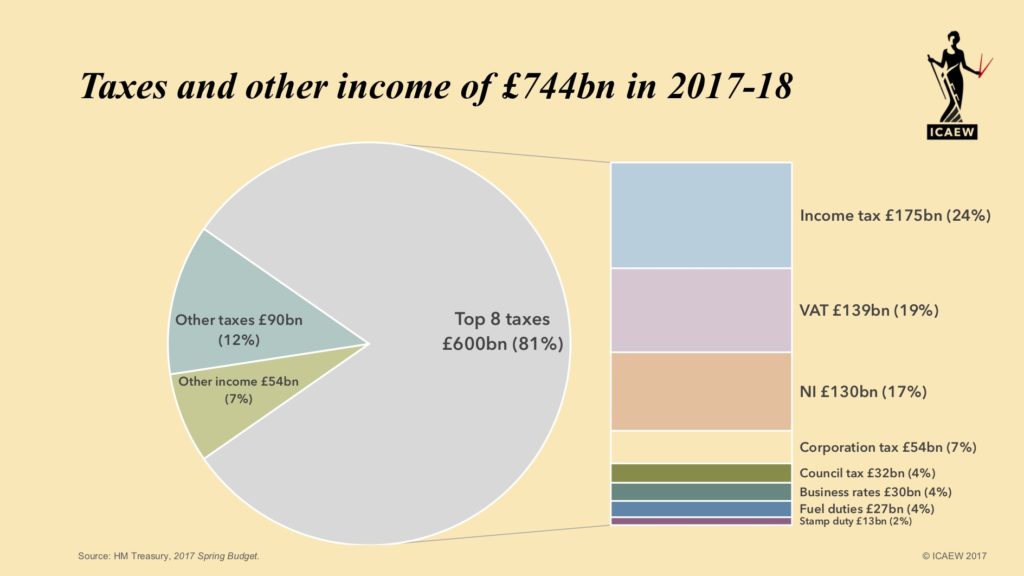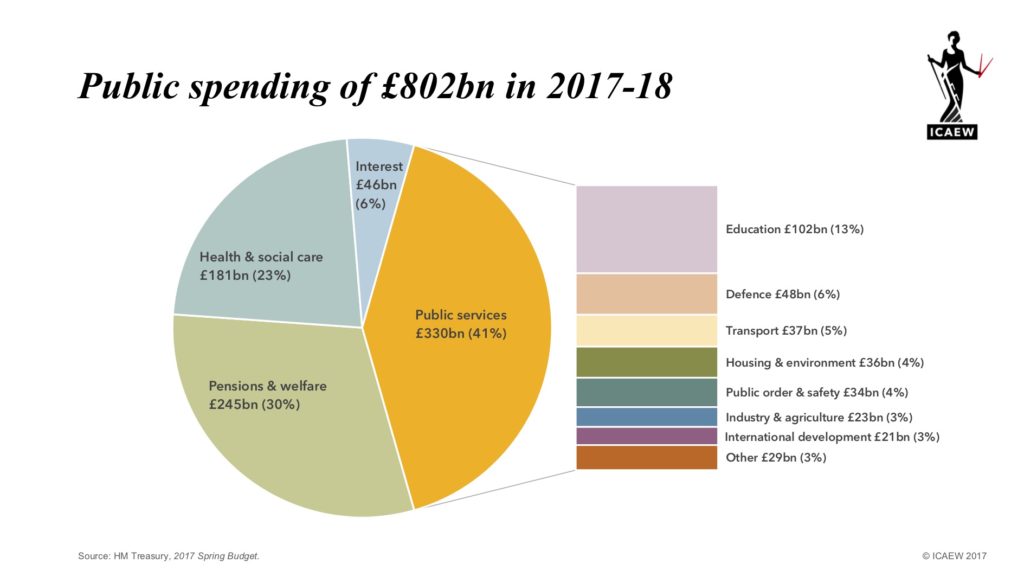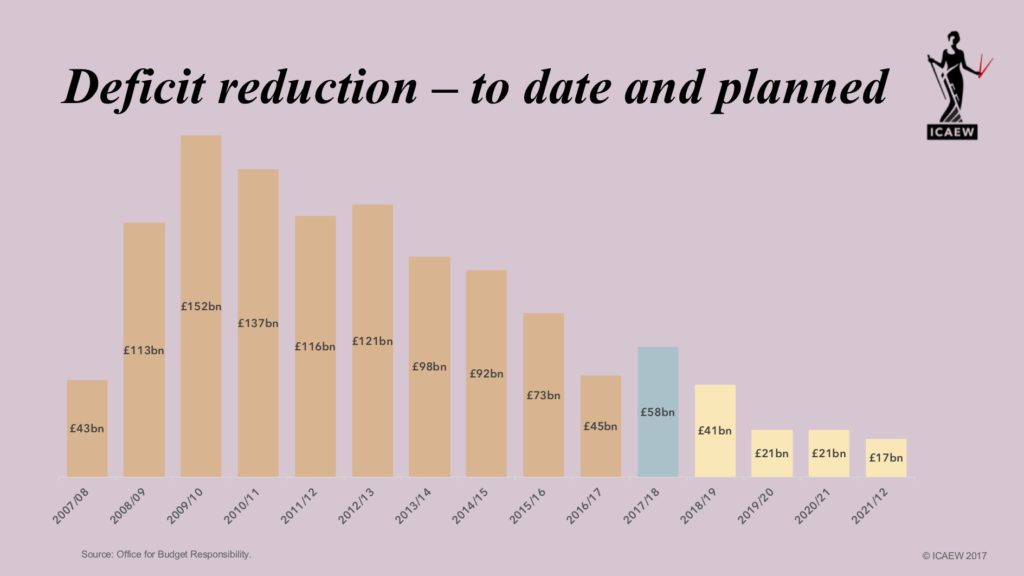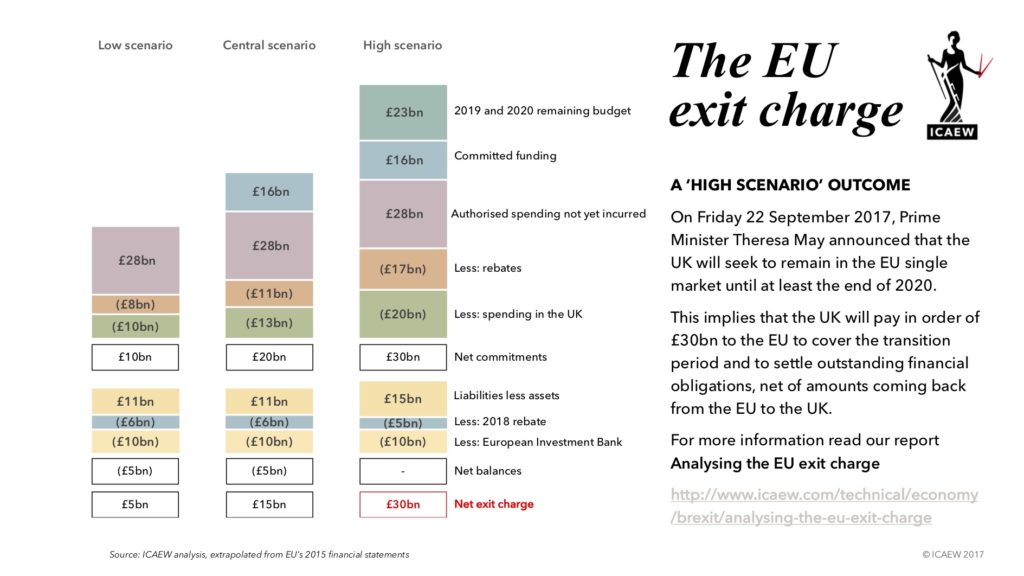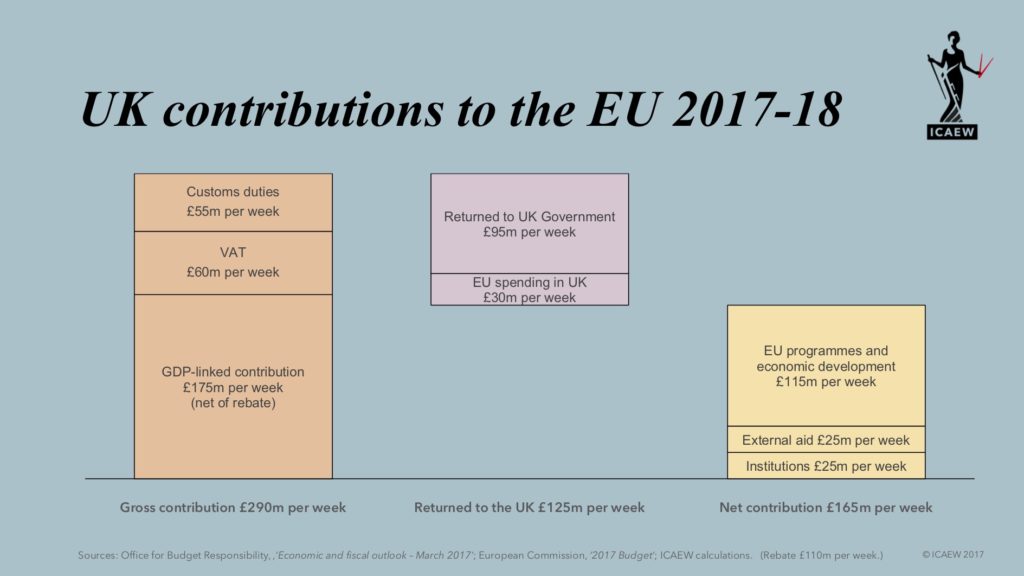Ross Campbell, ICAEW Director for Public Sector, writes:
“As talks about the EU exit charge and trade deals continue, this week’s ICAEW Chart of the Week is on the topic of international trade.
The UK ran a substantial £92bn surplus in its trade in services in 2016, with exports of £245bn exceeding imports of £153bn.
However, this was more than offset by a £135bn deficit in its trade in goods, with exports of £302bn more than exceeded by imports of £437bn. Overall the net trade deficit amounted to £43bn. This looks like a large number, but at 2% of GDP it should be seen in the context of the UK economy of over £2 trillion.
What the chart does illustrate is the significance of the UK’s trading relationship with the rest of Europe. EU and EFTA countries take 48% of the UK’s exports and provide 58% of our imports. After the EU and EFTA, the UK’s three largest trading partners were the USA, China and Japan.
We’ll cover how the trade deficits forms part of the overall current account deficit in a future chart. But our main point is that international trade is a key part of the economy and the UK currently buys more from overseas than it sells.
Given our history as a trading nation and the need in our current circumstances to forge new trading relationships, perhaps its time for a bit more support for our export drive?”
To comment, visit the ICAEW Talk Accountancy blog.

